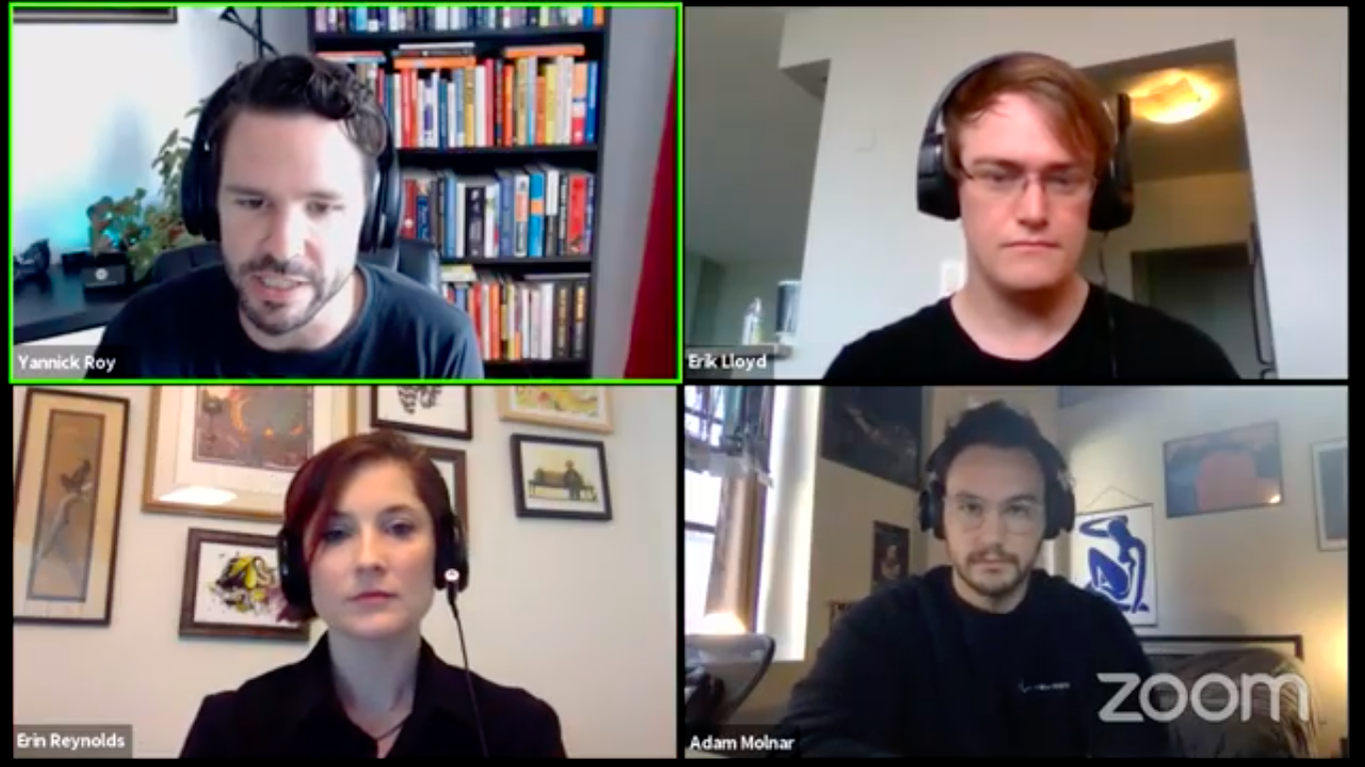NeurotechGaming 2020 conference. A summary

Below, there are my notes based on presentations and a panel discussion by Erin Reynolds, of Flying Mollusk, Adam Molnar of Neurable Inc., and Erik Lloyd of Brink Bionics.
This note represents my takeaways from the event, rather than its accurate account, therefore, please accept my apologies for not adding references and quotes. In italics are suggestions by Peter.
Why neurotech is not a big thing right now
- Lack of awareness: a) consumers are not aware of capabilities of tech; b) developers don’t know about tools for integrating neurotech into their products, e.g. plug-ins for Unity;
- The need to cover additional hardware costs. My guess is that we will see neurotech adopting business models that will allow to distribute hardware for consumers at no cost and to monetise it via something else, e.g. advertising. Big corporations like FB, Google, etc. will likely sponsor hardware (ethical issues here);
- A misconception about the capabilities of neurotech — while some applications, like healthcare, require more advanced tech that is not entirely here, tech for many consumer applications, e.g. gaming, is already available;
- The lack of funding — that’s a very complex problem, There are many types of funding, e.g. government grants, corporate R&D projects/investments, venture capital (VC), etc. Each type has its own dynamics/drivers. For example, increasing VC investments in mobile apps was accompanied by the emergence of large tech platforms in hardware/software (Apple, Windows, iOS, Android, etc.) and social (FB, Google). Cellular coverage, especially 3G, contributed to a boom in mobile app development and investing. I’ll do a separate post on factors that may accelerate development/investments in neurotech.
Hardware stack/trends
- Miniaturisation, from dozens of wet electrodes to ‘everyday’ headsets;
- Simplification of setting a device up, from 30 minutes to 2 minutes;
- We are at the stage when there is still a need for a separate sensor/hardware. However, developers might try to be creative and work with what is already embedded in other products. An example from Flying Mollusk is that they used a Garmin cardio chest strap first, and it was an additional sensor that users needed to have. Then, they adopted Affectiva’s SDK that worked on a notebook’s camera and allowed it to recognise emotional valence w/o a separate sensor;
- Each specific use case likely demands a specific sensor. E.g. reading signals from the nervous system from small muscles of a hand, instead of reading brain signals via an EEG headset, allowed lower latency for Brink Bionics. It requires 1–3 milliseconds to collect and crunch data from muscles in a hand and 1–3 seconds from the brain via an EEG headset.
Applications
1) Neurotech and gaming are meant for each other; just look at the evolution of interfaces for games: from simple controllers with a few buttons to advanced controllers and to ones where there are more buttons than fingers on a hand. Then there is gesture control touch control. Neurotech is an advanced two-directional way to engage with gaming experiences;
2) How to use neurotech in games:
- To power adaptive gameplay, when a game reacts to player’s emotions, even those that the player may not recognise;
- By adjusting gameplay to keep a gamer in the state of ‘flow’, between boredom and frustration;
- Gather data (lots of ethical questions here).
3. A more comprehensive framework for neurotech applications:
- Conscious control — like directing a robot or a game avatar;
- Enchanting technologies — Alexa etc.;
- Affective computing — machines understand the intentions of a user.
4. Other remarks on applications of neurotech
- We may expect the most value from neurotech when it becomes a part of our routine, not a one-off experience;
- We should not overvalue neurotech as a tool to make gaming and other experiences immersive. Sometimes essential tech, like a book (inks + paper), is very immersive. Storytelling and aesthetics is the key;
- Adopting neurotech in one industry does not necessarily lead to adoption in another. This is due to the variability of requirements for neurotech. A high emphasis on reliability but less demand for low latency is common for prosthetic applications. However, in gaming, low-latency controllers are critical.
How to start a neurotech company/what to study
- One option is to start it as a research project, e.g. as an MSc thesis (as Erin Reynolds did) and then evolve it into a company;
- Among other things, several research fields are relevant: neuroscience, signal processing, user design, and human-computer interaction.
Follow me on Twitter.